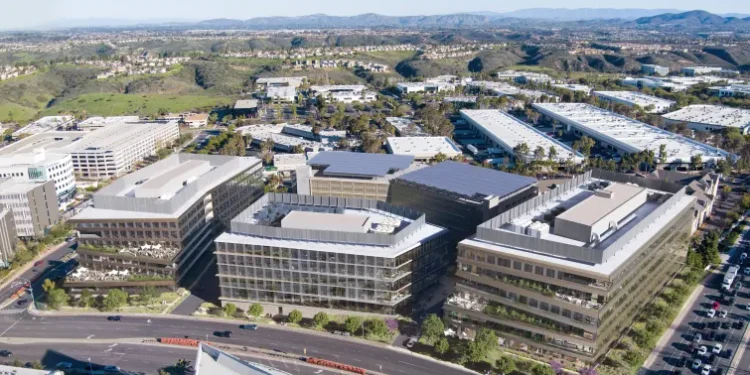Construction has started on the Pacific Center life science facility in San Diego, developed by Sterling Bay and Harrison Street. The initial phase of the campus, designed by Gensler and funded with a construction loan of $265 million from Bank OZK (OZK), will consist of a 1,700-spot parking complex, a 28,000-square-foot leisure center, and 500,000 square feet of research space. The first phase is scheduled to open in the fourth quarter of 2027, with the remainder of the $650 million complex in the Sorrento Mesa neighborhood being completed over the ensuing four years. In total, five buildings, including three lab buildings and a mass-timber amenities center, will be erected around a central plaza.
The facility will add to San Diego’s flourishing life sciences market, which has a meager 5.6% vacancy rate after Q1 2021 and high asking rents, according to CBRE.
More About the Pacific Center Life Science Facility
The team behind the project, Sterling Bay and Harrison Street, have previously partnered on life sciences undertakings across the country, with around one million square feet completed in Chicago and San Diego, and more planned in Denver, Philadelphia, and Raleigh-Durham, North Carolina.
Sterling Bay, which has a $20 billion development pipeline, is also involved in residential, commercial, and creative office properties.
“In the current economic climate, obtaining financing for new development is not an easy task,” said Sterling Bay CEO Andy Gloor. “The demand for modern, highly-amenitized research space in San Diego is higher than ever.”
Frequently Asked Questions
- Who is developing the Pacific Center life science facility in San Diego?
- What is the budget for the project?
- What will be included in the initial stage of construction?
- When will the first phase be completed?
Sterling Bay and Harrison Street are partnering on the project.
The project is estimated to cost $915 million USD.
During the first phase of construction, a 1,700-spot parking complex, a 28,000-square-foot leisure center, and 500,000 square feet of research space will be developed.
The first phase is expected to be completed in the fourth quarter of 2027.



